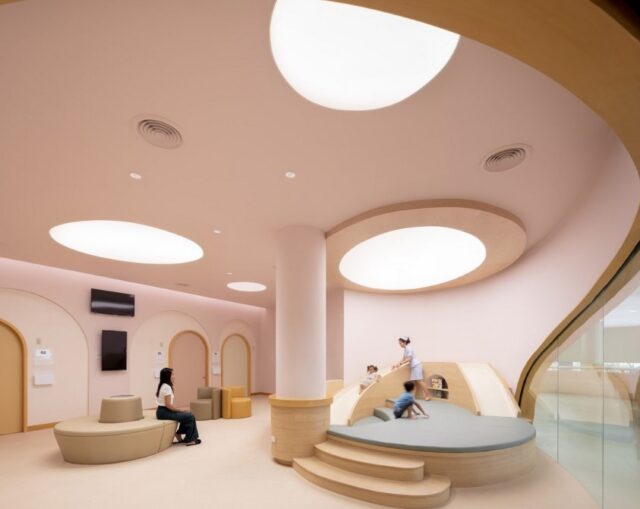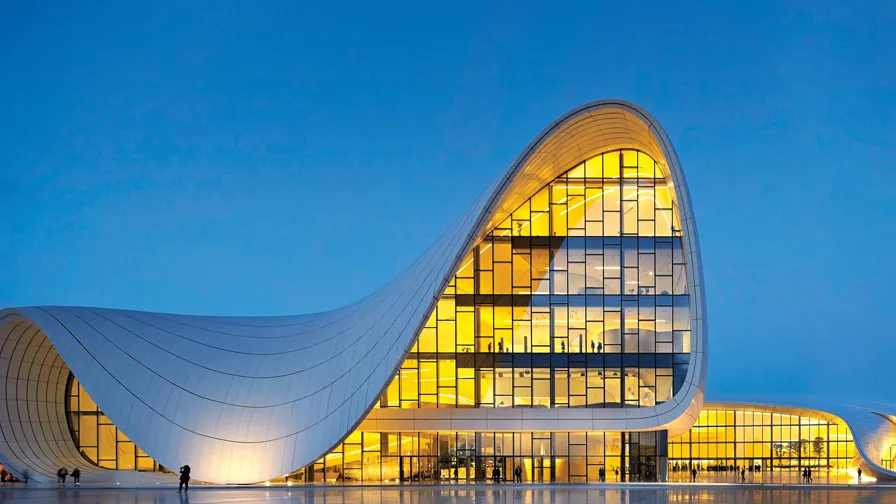
In recent years, healthcare architecture firms have positioned themselves at the forefront of a hospital design paradigm shift, incorporating innovative concepts and cutting-edge technologies to create spaces that prioritize patient well-being, efficiency, and healing.
The days of sterile and impersonal environments have receded, with contemporary hospitals reimagined as welcoming, patient-centric spaces that inspire a sense of comfort and promote holistic healing. This article presents an overview.
The Shift Toward Patient-Centric Environments
Designing spaces for healing has become a primary focus in modern healthcare architecture, with a notable shift towards creating patient-centric environments. Healthcare architecture firms play a critical role in this transformation, employing innovative design principles that prioritize the well-being and comfort of patients.
The era of sterile and intimidating hospital spaces is being rejuvenated by contemporary designs that aim to create warm, inviting and calming environments that promote healing and enhance the overall patient experience.
These firms leverage evidence-based design strategies, incorporating elements such as natural light, soothing colors, and access to nature to create a sense of tranquility.
Moreover, there is a predominant prioritization of privacy, pleasant aural acoustics, and the seamless integration of advanced technologies to facilitate efficient and effective healthcare delivery. Utilizing learned expertise and creativity, healthcare architecture firms are reshaping the landscape of healthcare facilities, placing the needs and healing journey of patients at the forefront of design considerations.
Redefining Hospital Spaces Through Modern Architecture

In a revolutionary transition, modern architecture is subverting stereotypes and redefining the traditional notion of hospital spaces. Architecture firms specializing in healthcare are leading this transformative movement, challenging preconceived notions of sterile and institutional environments. Through innovative design concepts, they are introducing elements of warmth, comfort, and aesthetics into hospital spaces.
Modern healthcare architecture typically aims to create welcoming and inclusive environments that prioritize the well-being of patients, families, and healthcare providers. Through the creation of open layouts and inviting common areas, these firms are transforming hospital spaces into places of solace and healing. The integration of art, greenery, and intuitive wayfinding further contribute to a positive and uplifting atmosphere.
Biophilic Design and Its Impact on Patient Well-being
The incorporation of nature through biophilic design has emerged as a powerful tool in healthcare architecture, significantly impacting patient well-being. Architecture firms specializing in healthcare are harnessing the healing power of nature by seamlessly integrating naturalistic elements into hospital spaces. From living walls and indoor gardens to panoramic views and access to outdoor areas, these designs create a connection with the natural world, fostering a sense of tranquility and promoting healing.
Academic studies have shown that exposure to nature can reduce stress, enhance patient mood and expedite recovery rates. By integrating ecological elements such as greenery and organic materials into healthcare environments, these firms are creating spaces that cater to the physical needs of patients and nurture their emotional and psychological well-being.
The Power of Technology

The power of technology is revolutionizing healthcare architecture as innovative advancements are seamlessly integrated into the design of healthcare facilities.
Architecture firms specializing in healthcare are at the forefront of this transformation, recognizing the potential of technology to enhance patient care, streamline operations and improve overall efficiency. From state-of-the-art medical equipment to cutting-edge communication systems, these firms are integrating the latest technological solutions into the fabric of healthcare architecture.
Advanced imaging systems, telemedicine capabilities and smart building automation are several examples of how technology is shaping the future of healthcare design. These innovations enhance the delivery of care and contribute to patient safety, comfort and convenience.
By embracing the power of technology, architecture firms are creating healthcare spaces that are adaptable, interconnected, and at the forefront of medical advancements – ultimately enhancing the overall healthcare experience for patients, practitioners and employees.
Eco-friendly Designs for Healthier Hospitals
Sustainable solutions are at the vanguard of healthcare architecture, as eco-friendly designs become a priority when creating healthier hospitals. Architecture firms specializing in healthcare are leading the way in incorporating sustainable practices and environmentally conscious design principles.
By utilizing energy-efficient technologies, optimizing soft lighting, implementing renewable energy sources, and integrating green building materials, these firms are reducing the carbon footprint of healthcare facilities.
Sustainable designs contribute to a healthier environment and promote more favorable patient outcomes – unrestricted access to views of nature has been linked to improved patient healing and well-being. Moreover, eco-friendly practices like water conservation and waste management systems ensure responsible resource usage.
Reimagining the Exterior

Architecture firms are challenging traditional design norms and embracing innovative approaches to create visually striking and architecturally captivating exteriors. The era of plain, institutional facades has become redundant, opening pathways for modern healthcare buildings designed to be visually appealing, welcoming, and in more in harmony with their surroundings. Sleek lines, dynamic shapes, and the creative use of materials are employed to create a captivating visual impact.
Through the careful consideration of natural light, landscaping, and site integration, these exteriors blend seamlessly into their environments, creating a sense of unity and heightened emotional connections. By reimagining the exterior aesthetics of healthcare architecture, architecture firms are redefining the public perception of hospitals, recasting them as beacons of modernity and symbols of architectural excellency.
Future Trends
As healthcare architecture continues to evolve, it is essential to anticipate future trends that will shape the landscape of hospital designs. Architecture firms specializing in healthcare are at the forefront of this progressive movement, constantly exploring innovative ideas and concepts. One significant emerging trend is the integration of technology-driven solutions, such as artificial intelligence, virtual reality, and robotics to enhance diagnostics, treatment, and patient experience.
Moreover, the concept of wellness-centered design is gaining prominence, with a focus on creating healing environments that promote physical and mental well-being. This includes the incorporation of mindfulness spaces, outdoor healing gardens, and sustainable features that prioritize patient and staff wellness.
Furthermore, flexible and adaptable designs are becoming more prevalent, facilitating hospitals to easily reconfigure physical spaces to meet changing healthcare needs. As the industry embraces these future trends, hospital designs will continue to evolve, emphasizing advanced technologies, wellness, flexibility and patient-centered care to create environments that foster healing, innovation and improved outcomes.








